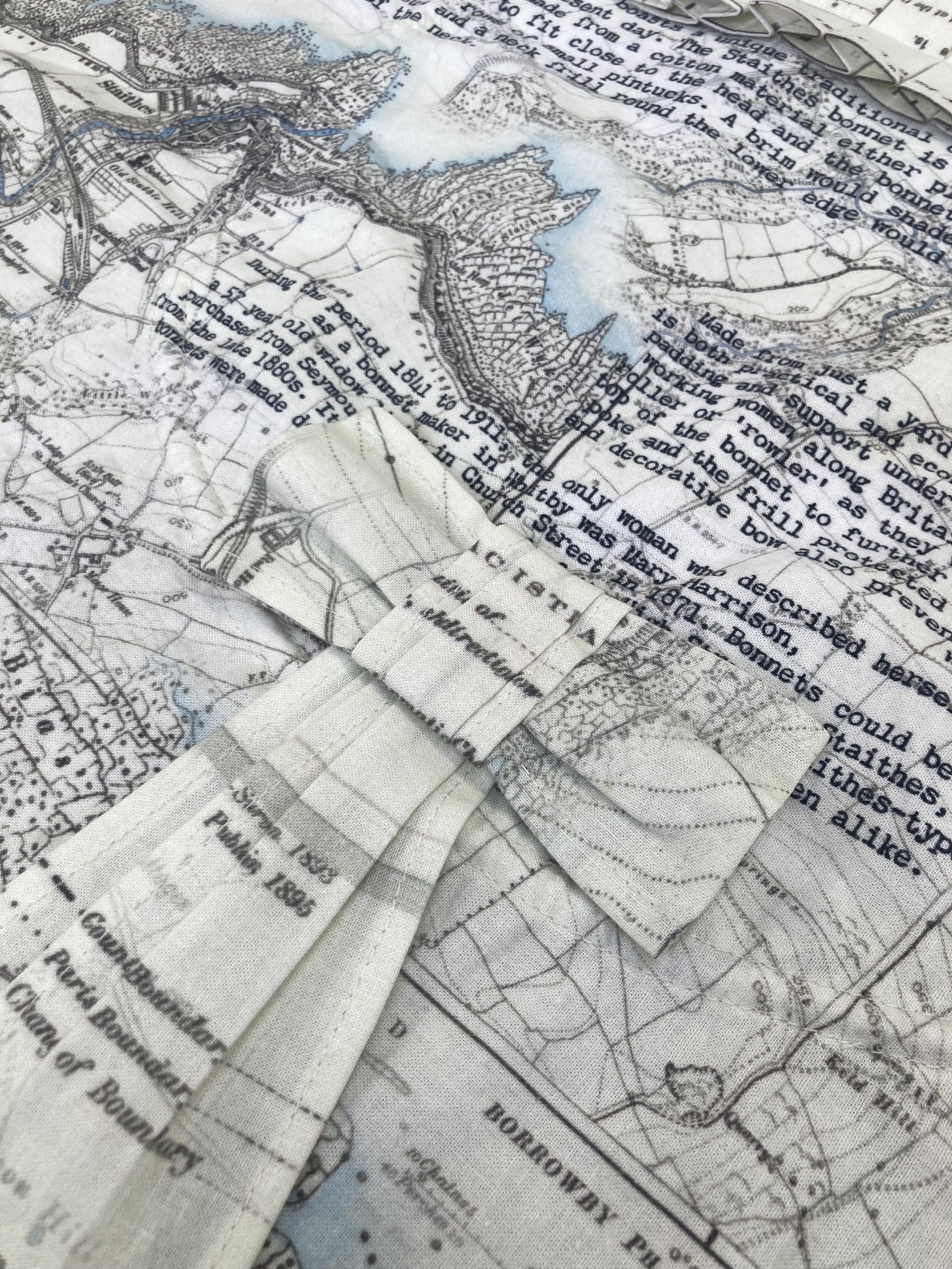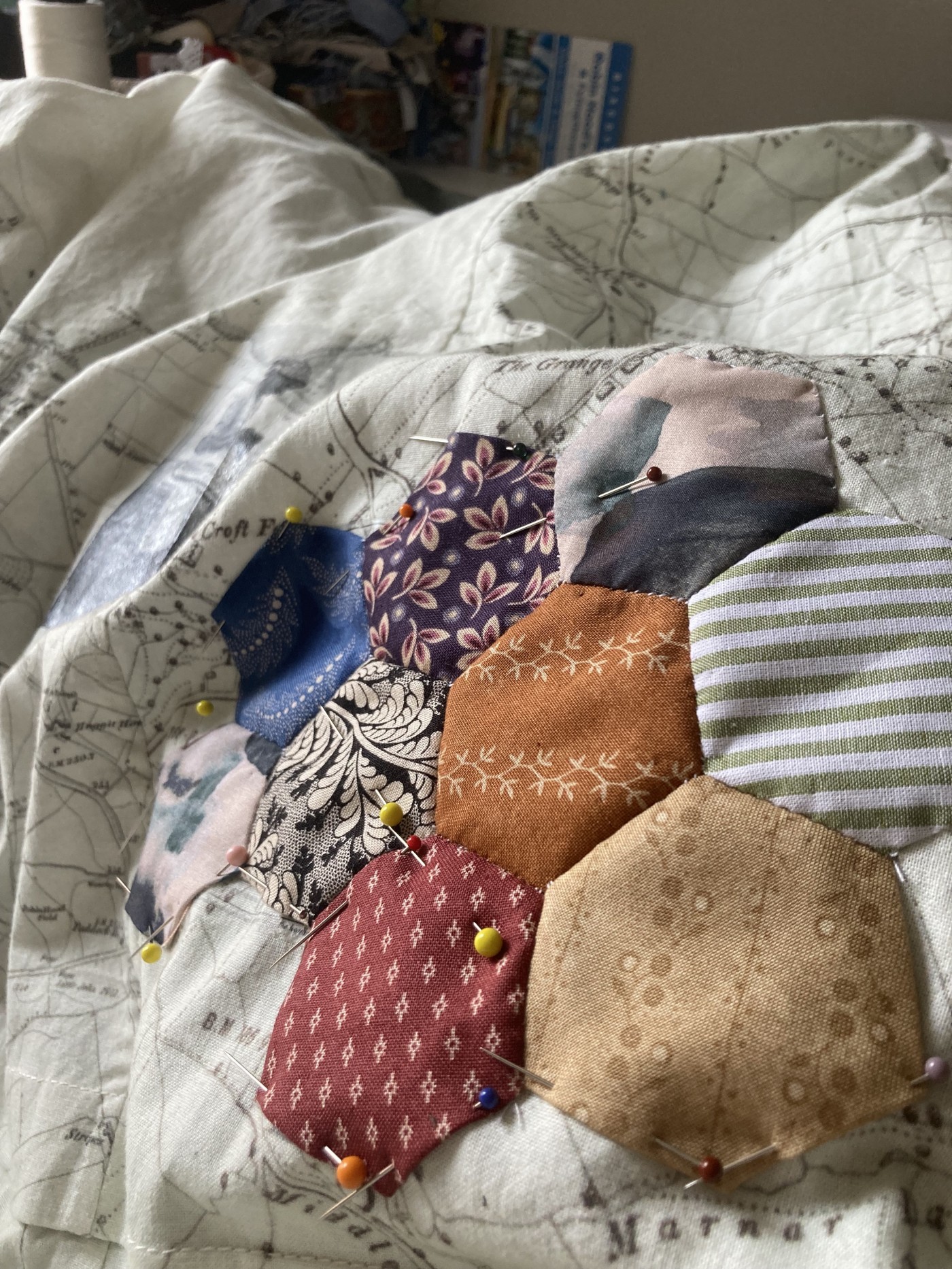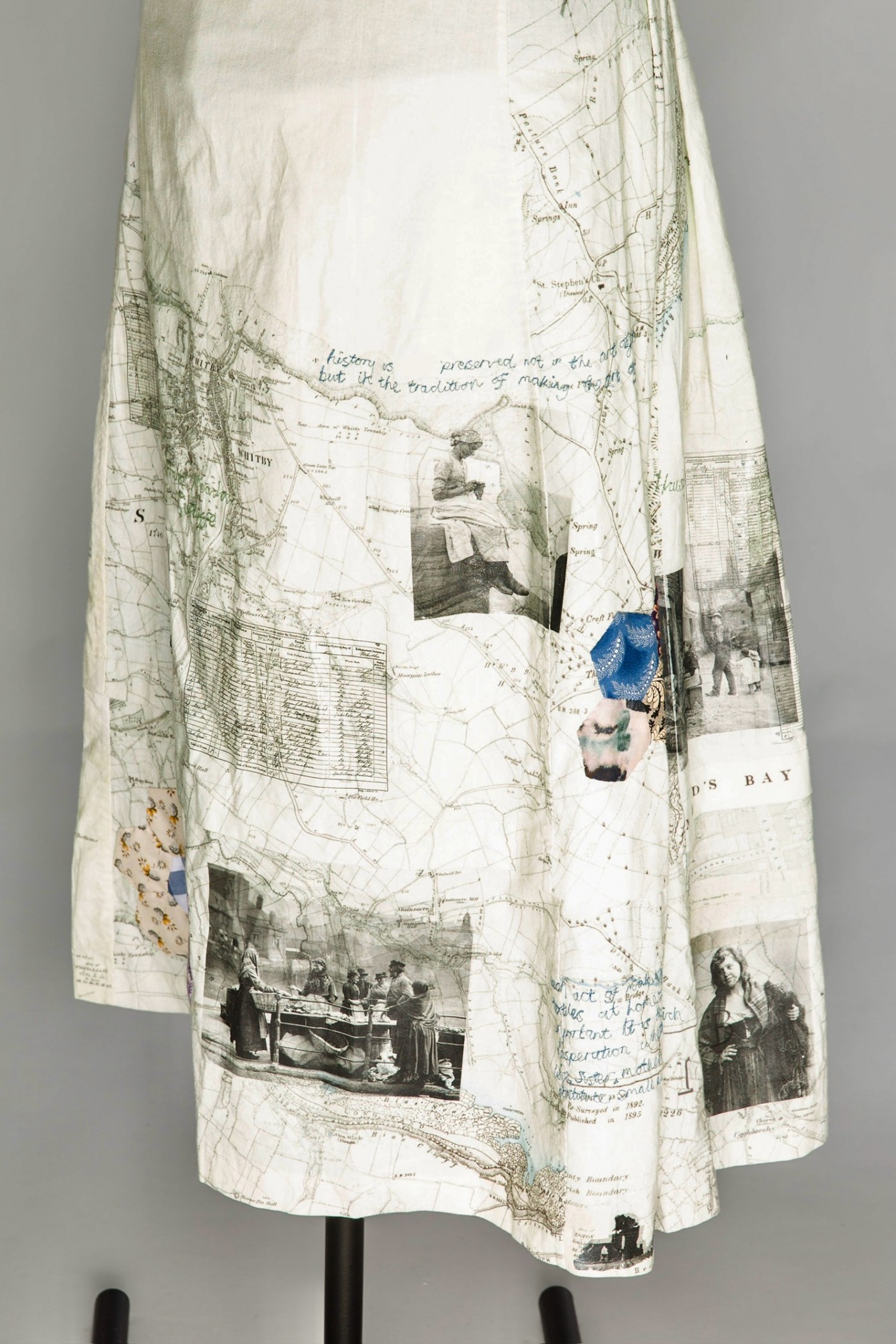- youtube
- bluesky
- Home
- About
- Costume Journal
- Membership
- Conference & Events
- Grants & Awards
- News & Social
In this week's blog post, Eleanor Hadfield, MA Historical Costume student at the Arts University Bournemouth and recipient of The Costume Society's Yarwood Grant, details her final degree project.
My final MA Historical costume project has been a layered exploration of working-class dress in coastal North Yorkshire 1840-1900, and the material culture of domestic textile provision and the life cycle of clothing. The project was split between practical and theoretical exploration, and the scope of my study was limited to these dates, and to the specific geographical region from Staithes to Robin Hoods Bay, as I was interested in exploring how dress and textiles in the insular fishing towns of the Yorkshire coast related to the rapidly industrialising society of Britain more widely. Both aspects of my work were underpinned by conceptual considerations of Place and deep mapping, and I placed particular focus on the domestic contributions of women, which have been largely overlooked but which should be recognised for their significance in both domestic and more broad societal spheres.
The practical work concluded with the construction of a late nineteenth-century working woman’s outfit, combining elements of reconstruction and reinterpretation, while my written paper posits the small daily acts of curation, undertaken in the making and mending of clothing and domestic textiles, as significant acts of place-making. The styling of the final project images was inspired by the iconic photographs taken by Frank Meadow Sutcliffe, which had been a constant reference point for visual analysis throughout the project. My research was financially supported by the Costume Society and the Textile Society, and I would also like to extend my thanks to Whitby Museum, Lucy Adlington, the Knitting and Crochet Guild and the staff and my fellow students on AUB Historical Costume for their additional support.
For my research paper, I conducted a review of existing literature related to working-class dress – and while more recent contributions such as John Styles’ The Dress of the People and Rachel Worth’s Clothing and Landscape in Victorian England provide more in-depth analytical accounts, I found that the themes I wanted to explore were still comparatively underrepresented, especially in the North of England and in my period of interest. While Viveka Hansen’s monograph The Textile History of Whitby proved to be an invaluable resource, I wanted to go further and to explore themes of Place and deep mapping in relation to dress and textiles, and to apply them to the tacit experiences of our ancestors. I drew together my secondary research, supported by visual analysis of three Frank Sutcliffe photographs and genealogical research to examine and imagine moments of history linked to the wearing and making of working-class dress on the North Yorkshire coast towards the end of the nineteenth century.
I designed my working woman’s outfit primarily based on Frank Sutcliffe’s photographs and contemporary paintings such as those by members of the Staithes group seen on a research trip in Yorkshire. While few tangible artefacts remain which tell this story of working-class clothing and life on the Yorkshire coast, I did use object-based research to inform my work when I could. I combined reconstruction and reinterpretation throughout my making process, however, where possible, I tried to use historically appropriate materials and methods, to help me understand the tacit experiences of women in the past more fully. This meant sourcing cotton and wool fabrics, hand sewing the chemise and using an antique hand-turned sewing machine for the construction of the outer garments – skirt, bodice, bonnet and apron. I referenced and adapted several patterns in Elizabeth Friendship’s Making Working Women’s Costume, drafted the corset pattern from Mandy Barrington’s Stays and Corsets and took the bonnet pattern from an early twentieth-century extant example kindly given to me by Lucy Adlington, the cut and construction of which I cross referenced with several other extant bonnets I was able to study at Whitby Museum, including a late nineteenth-century one.
The underpinnings I made for this final project included a petticoat and Staithes bonnet made as practical experiments with the concept of deep mapping, a term borrowed from spatial anthropology. Deep mapping records traces left by people on their surroundings, framing and transcribing the lived experience of place (Roberts, 2016). Deep maps should be multi-layered and express ‘temporal depth’ (Earley-Spadoni, 2017), like the patina of the place itself, by intertwining ‘the historical and the contemporary, the political and the poetic, the factual and the fictional, the discursive and the sensual’ (Pearson and Shanks, 2001). Made as a tactile experiment with this idea, the bonnet and petticoat were made from a fabric digitally printed with historical maps of coastal North Yorkshire, and the bonnet had several text passages exploring the tradition of bonnet making and wearing in Staithes. I developed the idea further on the petticoat, transfer printing Frank Sutcliffe photographs, reproduced with kind permission from Whitby Museum, as well as my own photographs, public records and census documents, patchwork appliqués and embroidered names and passages from my written piece. I’m very pleased with the overall effect of the petticoat, and how it conveys aspects of my research.
As well as making the woman’s outfit, I experimented with rag rugging, patchworking and traditional methods and patterns for knitting fishermen's’ ganseys – engaging with the domestic provision of textiles. I learnt a lot about darning and mending at the School of Historical Dress Course Darning: Functional and Fancy, and by studying samplers at Hampshire Cultural Trust and was able to apply this knowledge during the final stage of making, where I did some light breaking down to the outer garments to add more storytelling details and make the clothing feel more lived in and real.
MA Overview and Future Plans
Throughout the rest of my Masters, I developed skills in extant study, and practiced costume illustration. I have reconstructed eighteenth-century stays and contributed a pair of historically inspired patchwork pockets to Salisbury Museum’s recent exhibition Fashioning Our World. In early 2024, I completed an internship as Exhibition Assistant at Blandford Fashion Museum, to help install their current exhibition Our Sporting Heritage.
Moving forwards, I am keen to pursue a career researching and engaging with the dress history of the UK, and hope to gain experience in museums and archives. I am particularly interested in original practice and historical interpretation – in the embodied knowledge of the making and wearing of historical clothing, using reconstruction as a research methodology.
I can be found on Instagram at @cyclingsuitsandshenanigans.
More information on all of The Costume Society's grants, as well as our awards programme, can be found on our website.
Image gallery

Detail of Staithes bonnet made from the deep mapping printed fabric.

EPP (English Paper Piecing) patchwork applique for the deep mapping petticoat.

Back view of undergarments including deep mapping bonnet and petticoat. Photographer: Amy Harmon.

Close up of deep mapping petticoat. Photographer: Amy Harmon.